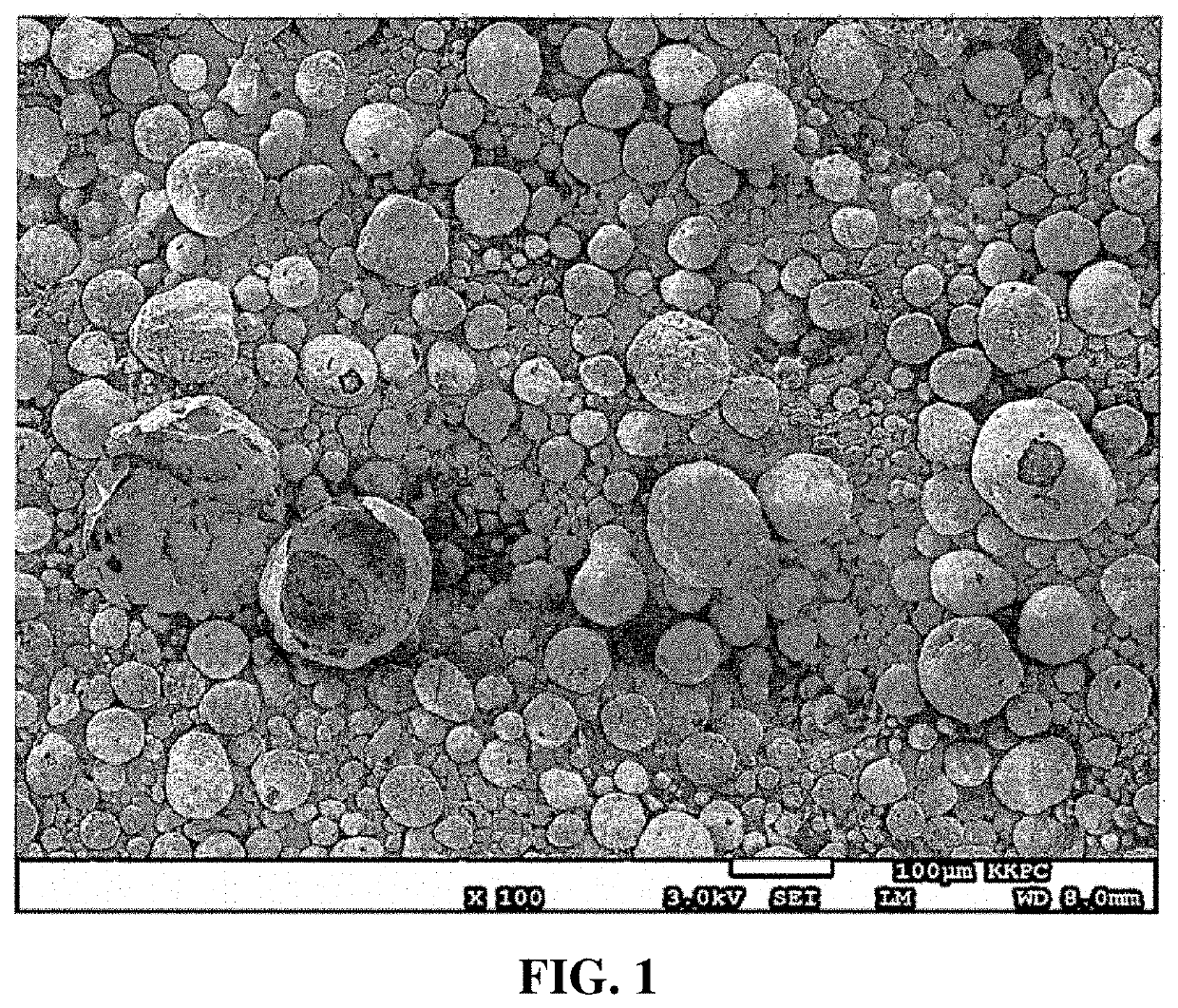Method for manufacturing multi-wall carbon nanotubes using continuous type process
a carbon nanotube and continuous type technology, applied in the direction of physical/chemical process catalysts, metal/metal-oxide/metal-hydroxide catalysts, chemical/physical/physical-chemical processes, etc., can solve the problems of low productivity, low uniformity of carbon nanotube synthesized, and high apparent density of catalyst powder prepared by spray drying, etc., to achieve high economic efficiency
- Summary
- Abstract
- Description
- Claims
- Application Information
AI Technical Summary
Benefits of technology
Problems solved by technology
Method used
Image
Examples
examples
[0063]A precursor solution was prepared by dissolving each precursor among Fe(NO3)3.9H2O, Co(NO3)3.6H2O, (NH4)6Mo7O24.4H2O, NH4VO3, (NH4)10H2(W2O7)6.9H2O, Al(NO3)3.9H2O, Mg(NO3)2.6H2O, and ZrO(NO3)2.2H2O in deionized water, which is required for a catalyst composition shown in the following Table 1. A catalyst powder was obtained by subjecting the precursor solution to thermal decomposition by spraying the same into a reactor at a rate of 3 L / hr along with air. Here, the thermal decomposition was carried out continuously for 120 minutes under conditions of an air pressure of 3 atm and a reactor internal temperature of 750° C.
[0064]
TABLE 1CatalystMa (number of moles)Mb (number of moles)Ma inMb inx (moley (moleClassificationcompositionFeCoMoVWAlMgZrtotaltotalfraction)fraction)Example 1Fe / Al / Mg71.6————148.282.3—71.6230.52.377.63Example 2Fe / Mo / Al / Mg88.6—5.2——183.5 4.1—93.8187.63.336.67Example 3Co / V / Al / Mg—118.8 —9.8—148.241.1—128.6189.44.045.96Example 4Fe / Co / Mo / Al47.014.85.2——185.3——67.1...
experimental example
[0067]The apparent density of each type of catalyst powder was calculated by dividing the weight of the catalyst powder, which was measured by filling a mass cylinder with the same, by the volume of the mass cylinder, and the apparent density of carbon nanotubes was determined in the same manner. In addition, the synthesis yield of carbon nanotubes was calculated according to the equation: “[weight of synthesized carbon nanotubes (g)] / [weight of introduced catalyst powder (g)]×100,” and the conversion rate of ethylene was calculated according to the equation: “{(weight of multi-walled carbon nanotubes (g))−(weight of catalyst powder (g))} / {(amount of supplied carbon-based gas (L))×(weight of carbon in one mole of carbon-based gas (g / mol)) / (22.4 (L / mol))}×100.” The results are shown in the following Table 2.
[0068]
TABLE 2ApparentSynthesisConversionApparentdensity ofyield ofrate ofdensity ofcatalystcarbonethylenecarbonpowdernanotubesgasnanotubesClassification(g / mL)(%)(%)(g / mL)Example 1...
PUM
| Property | Measurement | Unit |
|---|---|---|
| temperature | aaaaa | aaaaa |
| thickness | aaaaa | aaaaa |
| apparent density | aaaaa | aaaaa |
Abstract
Description
Claims
Application Information
 Login to View More
Login to View More - R&D
- Intellectual Property
- Life Sciences
- Materials
- Tech Scout
- Unparalleled Data Quality
- Higher Quality Content
- 60% Fewer Hallucinations
Browse by: Latest US Patents, China's latest patents, Technical Efficacy Thesaurus, Application Domain, Technology Topic, Popular Technical Reports.
© 2025 PatSnap. All rights reserved.Legal|Privacy policy|Modern Slavery Act Transparency Statement|Sitemap|About US| Contact US: help@patsnap.com


